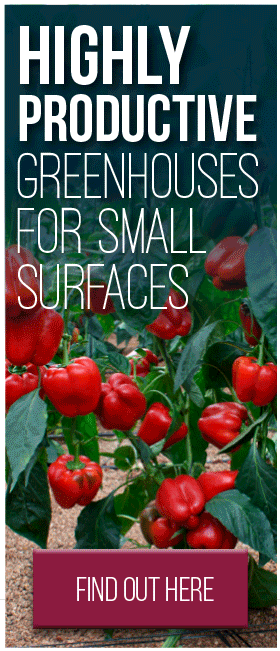
Screens we install allow proper control of light, temperature and humidity, resulting in a considerable improvement of the climate control.
Thermal Screens are fabrics formed by a combination of polyester fabric provided with a thin layer of aluminum woven with absorbent acrylic yarn. They balance the ambient temperature of the greenhouses maintaining the optimal levels for growing.
These mobile displays can be opened or closed voluntarily depending on the external weather conditions and crop. The system employs solar power to retain heat in the colder seasons. This is a significant saving in energy.
Types of Thermal Screens:
- Indoor Screens: For greenhouses, but also can be applied on farms, public venues (fairs, restaurants, terraces, etc.). Open, closed or rolling.
- Outdoor Screens: for crops that require aeration and should be protected from adverse weather conditions. They also serve to sports locations, swimming pools, etc. Open, closed or rolling.
- Photoperiod Screens: for roofs and sides.
- Screens open at 90% ceiling: let you toggle the greenhouse and outdoors at will.
|
|
|
|
|

|
The advantages of using heat shield installations:
- Humidity Control.
- Brightness control.
- Temperature control.
- Fuel savings in heating.
- Control and lower spending on irrigation water.
- Control and reduction of fungal diseases, sports grounds (football fields, tennis courts, swimming pools, etc.).
Screens energy savings:
Transparent screens are designed to retain the maximum amount of heat with minimal loss of light. They are ideal for the production of vegetable crops in colder climates.
Screens energy saving and solar reflection:
They are screens that offer a certain level of shade depending on the model, reflecting outward unwanted solar energy by the crop. When closed at night screens hold heat.
The higher the content of aluminum is, the larger shadow is created and the greater the power is saving.
Shade screens:
Indoor shading screens:
Screens are comprised of polyester film strip, aluminum strip for securing filament structure. The aluminum strips reflect over 90% of the solar radiation. The number of aluminum strips determines shading efficiency and ventilation capacity of the screen, as the hot air flowing through the aluminum strip. With shade screens it is possible to reduce radiation and high temperatures during the day. Overnight, reflects radiation plant long inward wave..
Outdoor shading screen:
Screens are to protect crops against direct appearance of elements such as high solar radiation, wind and hail. Exterior shading systems can be installed fixed or retractable. Retractable provide a moving shadow. These screens are reinforced by a strong plastic that sets the wire system.

Assembly system:
-
Rack Tube
-
Cable System
![]() Download Catalog
Download Catalog ![]() Download Screens Models
Download Screens Models










